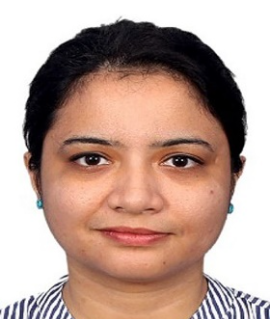Title : High performance gas separation studies by membrane technology
Abstract:
Global warming, a subject of increased emphasis in the recent years, is caused by the emission of greenhouse gases such as CO2 in the atmosphere. Greenhouse gases (GHGs) trap the heat radiating from the surface of earth when solar energy is being transmitted through the atmosphere thus increasing the global surface temperature. As a result of global warming, melting icebergs in polar oceans is causing the sea level to rise globally. The Intergovernmental Panel on Climate Change (IPCC) has predicted that the sea level will rise by 0.09 to 0.88 meters from 1990 to 2100, which is a matter of serious concern. CO2 which is the primary anthropogenic greenhouse gas, accounts for 77% of the human contribution to the greenhouse effect in recent decade (26 to 30 percent of all CO2 emissions). Carbon capture and storage (CCS) as a major strategy is being used to reduce GHGs emission. There are three methods for CCS: pre-combustion capture, oxy-fuel process, and post-combustion capture. Among them, post-combustion capture is the most important one because it offers flexibility and it can be easily added to the operational units. Conventional separation techniques such as absorption, cryogenic distillation and adsorption have huge applications. However, advanced technologies such as membrane separation technology have advantages of less energy consumption, light weight, space efficiency and compact modular design over these conventional techniques. Hence, membrane technology serves as clean, compact, energy management alternative thus amplifying its future scope as a very efficient technique for industrial application. The first idea of membrane separation dates back to 1980’s with major contributions by separex, generon and cynara. The performance of a membrane can be measured based on its permeability (Barrer) and selectivity. Different types of separation mechanism include molecular sieving, knudsen diffusion, solution diffusion and the more recent facilitated transport mechanism. Based on the materials used, membranes can be broadly classified into (1) Organic membranes, (2) Inorganic membranes, and (3) Mixed matrix membranes. Organic or polymer membranes are the most widely used commercial membranes in gas separation due to its advantages of low cost, high mechanical stability and efficient separation efficiency.
The constraint of this membrane came to be popularly known as Robeson’s upper bound limitation. In the Robeson’s plot, the selectivity was plotted as a function of CO2 permeability (Barrer). However, for large-scale application of gas separation membranes high CO2 permeance along with high selectivity plays a pivotal role. Also, organic membranes are restricted by low thermal, mechanical and chemical stability. Inorganic membrane normally exhibits high separation ability and operates at fairly high temperatures. However, the long-term application of these membranes is restricted by its high cost and brittle nature. Some common examples of inorganic membranes used for gas separation application includes zeolite and silica membranes. Another major class of advanced membrane material is mixed matrix membranes (MMM), developed by researchers in the mid 1980’s. These membranes combine the synergistic effect of both polymeric and inorganic materials. In this work, we will discuss in detail about the membranes available along with its recent advances in the field.
Audience take-away:
- This article provides a comprehensive review with respect to the utility of membranes (constituting a bulk and a filler scattered phase) towards CO2 separation. A thorough analysis was carried out with respect to membranes and their ability to enhance the CO2/N2 gas transport properties.
- This study provides alternate advanced fabrication methods to achieve membranes with high performance in gas separation.
- The high-end separation technology provided opportunity for large-scale gas separation operation and a very viable approach to be replaced with the conventional separation technology in terms of physico-chemical property enhancement and gas separation performance.


